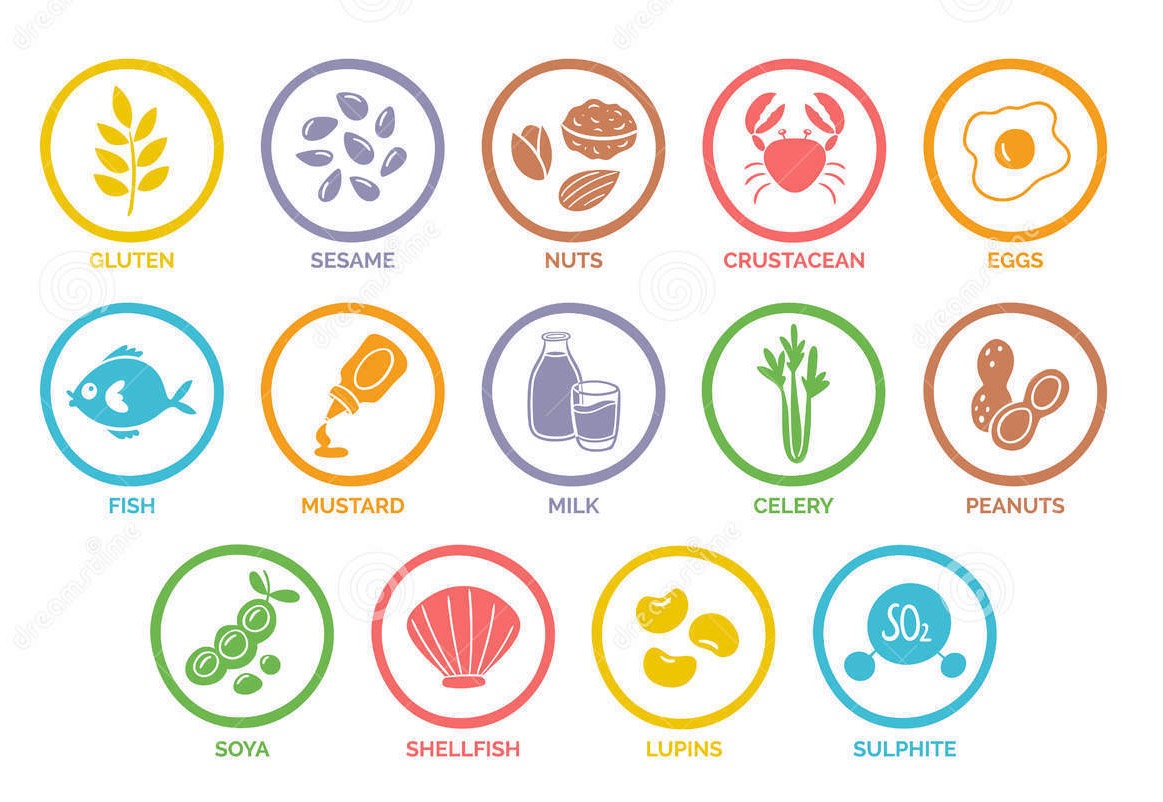Filter for Safety: Allergy Options
Back to Digital MenuWhat you’ll need
- Active Digital Menu subscription
- Permission: Manage online menu
- Access to the TaoRocket Console
1. Why Allergens Matter
Food allergies can have serious health consequences. Offering clear allergen information builds customer trust, improves safety, and can be a legal requirement.
TaoRocket’s digital menu integrates allergen filters to help customers avoid foods that might cause allergic reactions, improving their dining experience.

2. The EU-Based Allergen List (For Your Reference)
The following 14 allergens are supported by TaoRocket based on EU regulations.
These descriptions help you accurately tag menu items:
- Gluten: Cereals containing gluten: namely wheat (including specific varieties like spelt and Khorasan), rye, barley, oats and their hybridised strains and products thereof
- Crustacean: Crustaceans and products thereof (for example prawns, lobster, crabs and crayfish)
- Egg: Egg and products thereof
- Fish: Fish and products thereof
- Soy: Soybeans and products thereof
- Milk: Milk and products thereof (including lactose)
- Nut: Nuts: namely almond, hazelnut, walnut, cashew, pecan nut, Brazil nut, pistachio nut and Macadamia nut (Queensland nut) and products thereof
- Peanut: Peanut and products thereof
- Celery: Celery and products thereof
- Mustard: Mustard and products thereof
- Sesame: Sesame seeds and products thereof
- Sulphur dioxide and sulphites: Sulphur dioxide and sulphites (at concentrations of more than 10mg/kg or 10mg/L in terms of the total SO2 which are to be calculated for products as proposed ready for consumption or as reconstituted according to the instructions of the manufacturers)
- Lupin: Lupin and products thereof
- Mollusc: Molluscs and products thereof (for example clams, oysters, scallops, snails and squid)
3. Assigning Allergens to Menu Items and Variations
- When creating or editing items and variations, assign relevant allergens accurately.
- Allergens are inherited by variations from their parent item but can be reviewed individually.
- Proper allergen tagging enables accurate filtering and warnings on the menu.
4. How Allergen Filters Work for Customers
- Customers can filter the menu by excluding allergens they wish to avoid.
- When a customer selects an allergen filter, all items or variations containing that allergen are hidden.
- The filtering logic excludes any item if either the parent item or any of its variations contain the selected allergen.
- This ensures customers see only safe menu options.
5. Combining Allergens with Preferences
- Customers can also select dietary preferences (e.g., vegetarian, vegan, gluten-free).
- Preference filters use an OR logic: any item or variation matching the preferences will be shown.
- Allergens filter first excludes unsafe items; then preferences narrow down options further.
6. Best Practices for Managing Allergens
- Regularly update allergen information when recipes change.
- Train staff on allergen awareness and how to communicate with customers.
- Use clear, consistent allergen labeling in your digital menu.
- Encourage customers to notify staff of allergies despite filters, as a safety precaution.
7. Accessibility and Legal Compliance
- Providing allergen filters helps meet legal food safety requirements in many regions.
- It improves accessibility for customers with dietary restrictions or health conditions.
- Transparent allergen information promotes customer confidence and loyalty.
What’s next?
🎉 By effectively managing allergen information and filters, your digital menu becomes a safe, trusted tool for all customers—ensuring they enjoy every meal with confidence.